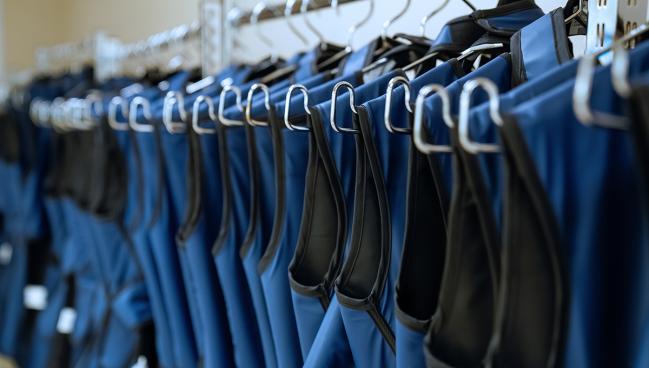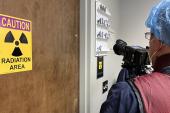Cath Lab Behavioral Changes Halved Patient Radiation Over 12 Years
Insight from almost 100,000 cases at a single institution show physician practice can make a difference, even without new tech.

Operators at one institution were able to decrease their patient radiation substantially over a 12-year period despite, in some cases, minimal technological improvements in the cath lab, according to data from almost 100,000 cases.
Concerns have persisted for decades about the harmful effects of cath lab radiation for both patients and clinicians. A recent global survey suggested that efforts to reduce radiation exposure remain patchy, with many operators aware they could be doing more to protect themselves, their teams, and their patients. On that background, the authors of this new single-center study hope that other institutions can learn from their achievements and adopt several practice changes that could decrease exposure for all.
“It turns out that well-trained, well-motivated, conscientious physicians are probably more important than the technology” when it comes to reducing radiation exposure, lead author Stephen Balter, PhD (Columbia University Irving Medical Center/NewYork-Presbyterian, New York, NY), told TCTMD.
Between 2007 and 2019, Balter and colleagues show, their institution reduced patient radiation dose by more than 50%, as well as contrast volume, without reducing fluoroscopy time.
“I looked at three of our labs where the equipment wasn’t changed over this period of time, and you see the curve looks about the same,” he explained. “There’s no technology magic. There is something going on with how patients are assigned to labs, but clearly this is a very strong signal showing that physician behavior and the use of the equipment changed over time.”
The key message is don’t degrade patient care but save radiation when you can. Stephen Balter
Co-author Jeffrey Moses, MD (Columbia University Irving Medical Center/NewYork-Presbyterian), agreed. “Technology has advanced tremendously, . . . but at least as big a driver has been physician behavior and our ability just to modify equipment that we already had,” he told TCTMD. “We’re able to really tease out the fact that physicians don’t have to sit around and say: ‘Well, I have to wait until my new lab comes in.’ There are things you can do on existing equipment that can really be beneficial for patient safety.”
Substantial Drops Over Time
For the study, published online earlier this month in the American Heart Journal, Balter and colleagues looked at radiation data from 99,400 nonelectrophysiology cath lab procedures performed by 111 operators at their institution.
Over a dozen years, overall median reference air kerma went down by 63% (1.5 to 0.5 Gy), with the 99th percentiles dropping by 44% (8.6 to 4.8 Gy). During the same time frame, median contrast volume for all procedures was also halved (150 to 70 mL); median fluoroscopy time for all procedures only went down by 2%.
When the analysis was limited to three fluoroscopes that were in use for the entire study period, median reference air kerma declined by 60% (1.6 to 0.6 Gy). Further, when the analysis was limited to operators who used the same fluoroscope for the duration of the study, median reference air kerma went down by 43% overall (P = 0.0362).
Physicians don’t have to sit around and say: ‘Well, I have to wait until my new lab comes in.’ There are things you can do on existing equipment that can really be beneficial for patient safety. Jeffrey Moses
Notably, the percentage of patients receiving a substantial radiation dose (> 5 Gy) drastically fell over the study period (7% to 0.8%), and there were no procedures logged above 10 Gy after 2017. Early during the study, the researchers noted some skin injuries resulting from radiation exposure—with none occurring after 2017—and the lowest reference air kerma for these was 6.8 Gy.
‘Save Radiation When You Can’
The main changes operators made were to cut their frame rates and rely less on cine imaging, Balter said. “You get used to images that don’t look as good as long as they’re good enough for you to appropriately take care of your patients,” he continued. “The key message is don’t degrade patient care but save radiation when you can. And our docs learned how to do this.”
Moses acknowledged that it took some time to become comfortable with these adaptations. “I’ll have to admit, when we cut the frame rate down, I was very resistant,” he said. “But then you sort of got used to it, and you sort of coordinated your hand-eye to a slightly different cadence and suddenly it wasn’t so bad.”
Now, he recommends other operators take stock of their habits and consider not only lowering their machine’s radiation dose, but also collating images and minimizing the angles taken to increase the amount of tissue in view.
“Be adaptable,” Moses advised. “With all the changes in technology and imaging, don’t get married to one technique. When things are offered, experiment. We have all these other ancillary tools now that . . . allow us to take one picture which could save us 10 more pictures.”
Yael L. Maxwell is Senior Medical Journalist for TCTMD and Section Editor of TCTMD's Fellows Forum. She served as the inaugural…
Read Full BioSources
Balter S, Moses J, Hyasat K, et al. Evolving operator practices reduced patient radiation dose in interventional cardiology: trends in a single center. Am Heart J. 2025;Epub ahead of print.
Disclosures
- Balter and Moses report no relevant conflicts of interest.





Comments